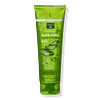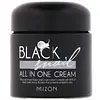What's inside
What's inside
 Key Ingredients
Key Ingredients

 Benefits
Benefits

 Concerns
Concerns

 Ingredients Side-by-side
Ingredients Side-by-side

Water
Skin ConditioningAloe Barbadensis Leaf Juice
Skin Conditioning1,2-Hexanediol
Skin ConditioningMethylpropanediol
SolventCarbomer
Emulsion StabilisingTromethamine
BufferingPolysorbate 20
EmulsifyingEthylhexylglycerin
Skin ConditioningDisodium EDTA
Phenoxyethanol
PreservativeSodium Hyaluronate
HumectantButylene Glycol
HumectantGlycerin
HumectantEthyl Hexanediol
SolventCitrus Aurantifolia Fruit Extract
Skin ConditioningVeronica Officinalis Extract
Skin ConditioningPrimula Veris Extract
Skin ConditioningHydrolyzed Collagen
EmollientMentha Piperita Leaf Extract
Skin ConditioningMelissa Officinalis Leaf Extract
Skin ConditioningMalva Sylvestris Extract
AstringentAlchemilla Vulgaris Extract
AstringentAchillea Millefolium Extract
CleansingParfum
MaskingCitrus Limon Fruit Extract
MaskingWater, Aloe Barbadensis Leaf Juice, 1,2-Hexanediol, Methylpropanediol, Carbomer, Tromethamine, Polysorbate 20, Ethylhexylglycerin, Disodium EDTA, Phenoxyethanol, Sodium Hyaluronate, Butylene Glycol, Glycerin, Ethyl Hexanediol, Citrus Aurantifolia Fruit Extract, Veronica Officinalis Extract, Primula Veris Extract, Hydrolyzed Collagen, Mentha Piperita Leaf Extract, Melissa Officinalis Leaf Extract, Malva Sylvestris Extract, Alchemilla Vulgaris Extract, Achillea Millefolium Extract, Parfum, Citrus Limon Fruit Extract
Snail Secretion Filtrate
Skin ConditioningNiacinamide
SmoothingHelianthus Annuus Seed Oil
EmollientCetearyl Olivate
Sorbitan Olivate
EmulsifyingButylene Glycol
HumectantSynthetic Wax
AbrasivePhenoxyethanol
PreservativeWater
Skin ConditioningEthylhexylglycerin
Skin ConditioningHydroxyethyl Acrylate/Sodium Acryloyldimethyl Taurate Copolymer
Emulsion StabilisingCarbomer
Emulsion StabilisingTriethanolamine
BufferingCaprylyl Glycol
EmollientSodium Polyacrylate
AbsorbentAdenosine
Skin ConditioningTropolone
Skin ConditioningCoptis Chinensis Root Extract
AntioxidantSorbitan Isostearate
EmulsifyingPolysorbate 60
EmulsifyingDisodium EDTA
Allantoin
Skin ConditioningPanthenol
Skin ConditioningGlycerin
HumectantTheobroma Cacao Extract
Skin ConditioningDextrin
AbsorbentTocopherol
Antioxidant1,2-Hexanediol
Skin ConditioningCentella Asiatica Extract
CleansingPalmitoyl Tripeptide-5
Skin ConditioningBeta-Glucan
Skin ConditioningCopper Tripeptide-1
Skin ConditioningSolanum Melongena Fruit Extract
Skin ConditioningCassia Obtusifolia Seed Extract
Skin ConditioningPorphyra Tenera Extract
Skin ConditioningFagus Sylvatica Seed Extract
Skin ConditioningDictyopteris Membranacea Extract
AntioxidantAllium Sativum Bulb Extract
Skin ConditioningPrunus Mume Fruit Extract
HumectantPolygonum Fagopyrum Seed Extract
Skin ConditioningRubus Coreanus Fruit Extract
Skin ConditioningMirabilis Jalapa Seed Extract
Skin ProtectingSepiolite
Charcoal Powder
AbrasiveAronia Melanocarpa Fruit Extract
Skin ConditioningEuterpe Oleracea Fruit Extract
Sambucus Nigra Fruit Extract
AstringentMorus Alba Fruit Extract
AntioxidantRhus Semialata Gall Extract
Skin ConditioningCinnamomum Cassia Bark Extract
MaskingInonotus Obliquus Extract
Skin ConditioningAnnona Cherimola Fruit Extract
Skin ConditioningCoffea Arabica Fruit Extract
AntioxidantVitis Vinifera Fruit Extract
Skin ConditioningCorthellus Shiitake Extract
Skin ProtectingPiper Nigrum Seed Extract
RefreshingSaccharum Officinarum Extract
MoisturisingRose Extract
Skin ConditioningSh-Oligopeptide-1
Skin ConditioningSnail Secretion Filtrate, Niacinamide, Helianthus Annuus Seed Oil, Cetearyl Olivate, Sorbitan Olivate, Butylene Glycol, Synthetic Wax, Phenoxyethanol, Water, Ethylhexylglycerin, Hydroxyethyl Acrylate/Sodium Acryloyldimethyl Taurate Copolymer, Carbomer, Triethanolamine, Caprylyl Glycol, Sodium Polyacrylate, Adenosine, Tropolone, Coptis Chinensis Root Extract, Sorbitan Isostearate, Polysorbate 60, Disodium EDTA, Allantoin, Panthenol, Glycerin, Theobroma Cacao Extract, Dextrin, Tocopherol, 1,2-Hexanediol, Centella Asiatica Extract, Palmitoyl Tripeptide-5, Beta-Glucan, Copper Tripeptide-1, Solanum Melongena Fruit Extract, Cassia Obtusifolia Seed Extract, Porphyra Tenera Extract, Fagus Sylvatica Seed Extract, Dictyopteris Membranacea Extract, Allium Sativum Bulb Extract, Prunus Mume Fruit Extract, Polygonum Fagopyrum Seed Extract, Rubus Coreanus Fruit Extract, Mirabilis Jalapa Seed Extract, Sepiolite, Charcoal Powder, Aronia Melanocarpa Fruit Extract, Euterpe Oleracea Fruit Extract, Sambucus Nigra Fruit Extract, Morus Alba Fruit Extract, Rhus Semialata Gall Extract, Cinnamomum Cassia Bark Extract, Inonotus Obliquus Extract, Annona Cherimola Fruit Extract, Coffea Arabica Fruit Extract, Vitis Vinifera Fruit Extract, Corthellus Shiitake Extract, Piper Nigrum Seed Extract, Saccharum Officinarum Extract, Rose Extract, Sh-Oligopeptide-1
Ingredients Explained
These ingredients are found in both products.
Ingredients higher up in an ingredient list are typically present in a larger amount.
1,2-Hexanediol is a synthetic liquid and another multi-functional powerhouse.
It is a:
- Humectant, drawing moisture into the skin
- Emollient, helping to soften skin
- Solvent, dispersing and stabilizing formulas
- Preservative booster, enhancing the antimicrobial activity of other preservatives
Butylene Glycol (or BG) is used within cosmetic products for a few different reasons:
Overall, Butylene Glycol is a safe and well-rounded ingredient that works well with other ingredients.
Though this ingredient works well with most skin types, some people with sensitive skin may experience a reaction such as allergic rashes, closed comedones, or itchiness.
Learn more about Butylene GlycolCarbomer is a polymer of acrylic acid. Its main role is to create a gel consistency.
A high amount of carbomer can cause pilling or balling up of products. Don't worry, most products contain 1% or less of carbomer.
Disodium EDTA plays a role in making products more stable by aiding other preservatives.
It is a chelating agent, meaning it neutralizes metal ions that may be found in a product.
Disodium EDTA is a salt of edetic acid and is found to be safe in cosmetic ingredients.
Learn more about Disodium EDTAEthylhexylglycerin (we can't pronounce this either) is commonly used as a preservative and skin softener. It is derived from glyceryl.
You might see Ethylhexylglycerin often paired with other preservatives such as phenoxyethanol. Ethylhexylglycerin has been found to increase the effectiveness of these other preservatives.
Glycerin is already naturally found in your skin. It helps moisturize and protect your skin.
A study from 2016 found glycerin to be more effective as a humectant than AHAs and hyaluronic acid.
As a humectant, it helps the skin stay hydrated by pulling moisture to your skin. The low molecular weight of glycerin allows it to pull moisture into the deeper layers of your skin.
Hydrated skin improves your skin barrier; Your skin barrier helps protect against irritants and bacteria.
Glycerin has also been found to have antimicrobial and antiviral properties. Due to these properties, glycerin is often used in wound and burn treatments.
In cosmetics, glycerin is usually derived from plants such as soybean or palm. However, it can also be sourced from animals, such as tallow or animal fat.
This ingredient is organic, colorless, odorless, and non-toxic.
Glycerin is the name for this ingredient in American English. British English uses Glycerol/Glycerine.
Learn more about GlycerinPhenoxyethanol is a preservative that has germicide, antimicrobial, and aromatic properties. Studies show that phenoxyethanol can prevent microbial growth. By itself, it has a scent that is similar to that of a rose.
It's often used in formulations along with Caprylyl Glycol to preserve the shelf life of products.
Water. It's the most common cosmetic ingredient of all. You'll usually see it at the top of ingredient lists, meaning that it makes up the largest part of the product.
So why is it so popular? Water most often acts as a solvent - this means that it helps dissolve other ingredients into the formulation.
You'll also recognize water as that liquid we all need to stay alive. If you see this, drink a glass of water. Stay hydrated!
Learn more about Water